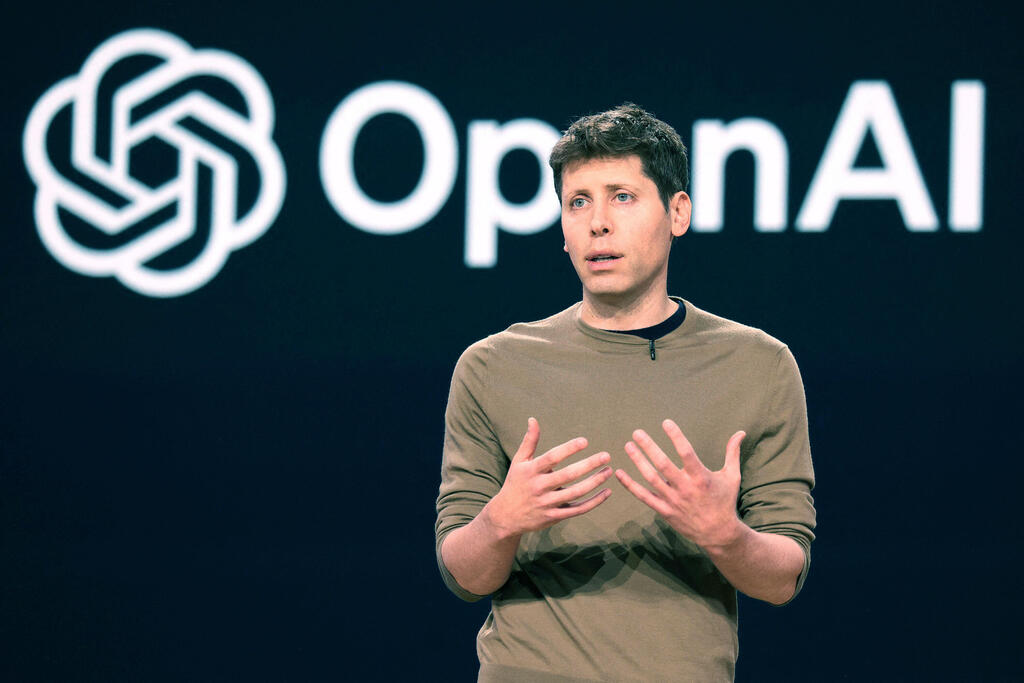A recent tweet on the social network X provided a glimpse into the revolution artificial intelligence (AI) is sparking in academia—a glimpse of a process that may ultimately transform academic research as we know it. Alon Oring, a lecturer at the Efi Arazi School of Computer Science at Reichman University, highlighted a tense relationship between lecturers and students in his tweet.
"Here are some tips for students submitting assignments and homework who think their lecturers have been living in a cave and are unaware of GPT’s existence," Oring wrote sarcastically, referring to student submissions written entirely by AI, including the polite phrases added at the end by chatbots.
"I believe it would be helpful for some of you to gain perspective from someone who has to read what you sometimes forget to delete from your submissions. My basic expectation is that you stand behind every word written in your work. If you leave traces of GPT, I have no choice but to assume you used a language model to solve the entire assignment and copied everything without checking. The path to a zero grade is immediate and without appeal."
It may be too challenging for today's students to review their AI-generated submissions and remove unnecessary phrases, but even when students make an effort to edit incriminating sentences, the fundamental problem remains: AI tools today can write academic papers from start to finish—not only undergraduate assignments but also research papers and academic literature reviews. AI models at the forefront of research may already be capable of writing theses, and in the future, even doctoral dissertations.
The academic world is in turmoil—nothing has been the same since AI entered the scene. AI’s ability to generate text strikes academia at its core: expressing ideas through writing. If AI can do this as well as researchers, perhaps their profession could also be replaced. Despite academia being a field dedicated to research, the impact of AI on academic research seems to be a relatively neglected area of study.
For now, the main beneficiaries of this shortcut are students, many of whom use AI as an integral part of their studies. From introducing themselves in the first class, writing emails, preparing class assignments, and drafting questions for discussions, to completing graded submissions. It’s not as though lecturers aren’t using AI themselves—for example, to prepare lesson plans, build presentations, or design research and articles. The temptation to use AI to write an entire paper is real, but at least academic papers must ultimately withstand peer review.
Universities, however, are primarily concerned about the students’ level of knowledge. Some institutions have issued guidelines for ethical AI use, while others have banned it outright. In many places, lecturers use AI detection tools that claim to identify AI-generated writing with 90% or even 95% accuracy.
But statistics don’t matter to a student whose work is mistakenly disqualified. And there are many errors—whether because detection tools are outdated and fail to recognize the latest AI versions, or due to biases, such as disproportionately flagging submissions from immigrant students. In any case, it’s a Sisyphean battle. A recent British study found that 97% of AI-generated papers were not identified as such.
You might argue that AI is just a tool and that students should be taught how to use it rather than being prohibited from doing so. Here’s another finding from the same British study: 83% of papers generated using AI received higher grades than those written by human students.
This means not only is AI’s involvement difficult to detect, but its output is more thorough and meets lecturers’ expectations. So, what do people want from students? Should they jeopardize their chances of academic success just to insist on writing their papers manually? Either way, it seems that something is going wrong in academia because of AI.
Now let’s say you’re a student. You enrolled in a program because the field interests you, and maybe you even want to work in it in the future. But you have a busy life—you need to work to pay for your studies and occasionally make time for leisure. Amid all this, you’re expected to read lengthy academic articles in English.
So, you submit your assignments on time, with AI’s help, secretly hoping they’ll land you on the dean’s list at the end of the year. It’s understandable why lecturers are frustrated: their goal is to teach you how to think and, along the way, help you enjoy the process—gain knowledge, understand concepts, and specialize in your field. AI undermines these goals.
Get the Ynetnews app on your smartphone: Google Play: https://bit.ly/4eJ37pE | Apple App Store: https://bit.ly/3ZL7iNv
But despite everything, it’s possible to do both—use AI ethically and effectively to make your life easier while excelling as a student who genuinely understands the material. Here are some tips to help you achieve that:
- Use AI to jumpstart your work: Plan your paper’s structure, suggest research questions, or identify discussion points. Your goal is to avoid relying on it for the entire assignment. Remember, you’re the one writing, and AI is assisting. Use it for technical elements and general reviews, while focusing your efforts on analysis and insights that will impress your graders.
- Work in stages: Start by outlining your paper—its topic, main sections, and methodology. Let AI offer suggestions, but identify areas to improve. Ensure you understand every part of the proposed work. You should feel confident that you could write the paper yourself if necessary.
- Use AI to rewrite sections in an academic style: Read the results. If the text seems unfamiliar to you, treat it as a red flag and an opportunity to revisit your materials.
- Verify facts, data, and dates: These are AI’s weak points and where it tends to invent details. Don’t trust any fact or date it provides without checking its accuracy. This also gives you another chance to review the material.
- Refine the text: Generic and bland sentences are a hallmark of AI-generated work. Vary sentence lengths, add personal touches, express clear opinions, and replace generic terms with more precise phrases. This will also help AI detection tools leave you alone.
- Cite real sources: AI has a creative streak when it comes to citations and references, often inventing articles and rulings. Fabricated sources are clear evidence of AI use, so take the time to find real ones, save them in a file, and understand their key points. This will also allow you to add unique sources that AI cannot access.
- Run your final paper through an AI detection tool: This is worth doing even if you wrote the paper entirely yourself. You never know how the AI detection tool will perceive your work.
By following these steps, you can use AI responsibly while still learning, understanding the material, and excelling in your studies.




